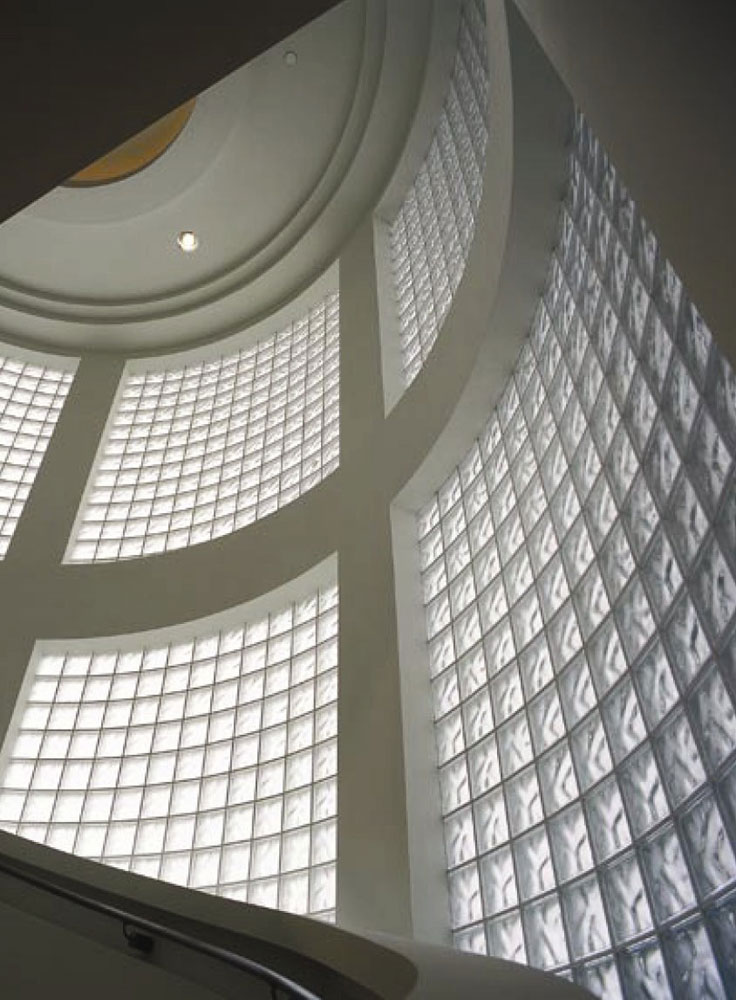Table of Content
- Checklist - Before buying Builder’s Risk Insurance
- At Temple Health, lung screening goes a whole lot farther
- Home Insurance Building
- What Do You Think Is The Significance Of The Home Insurance Building In Chicago?
- Life cover
- Why choose our insurance?
- Do You Need a Permit to Build a Pergola?
- Basic design considerations
There are several design methods that could be employed in the construction of a skyscraper that would take advantage of the height of the building. The microclimates that exist as the height of the building increases can be taken advantage of to increase the natural ventilation, decrease the cooling load, and increase daylighting. Natural ventilation can be increased by utilizing the stack effect, in which warm air moves upward and increases the movement of the air within the building. If utilizing the stack effect, buildings must take extra care to design for fire separation techniques, as the stack effect can also exacerbate the severity of a fire. Skyscrapers are considered to be internally dominated buildings because of their size as well as the fact that a majority are used as some sort of office building with high cooling loads. Due to the microclimate created at the upper floors with the increased wind speed and the decreased dry bulb temperatures, the cooling load will naturally be reduced because of infiltration through the thermal envelope.
As a result, leaving it in place means there’s an ongoing safety issue on your property. Typically, small decorative pergolas won’t have permit requirements, especially if they aren’t attached to a nearby structure and don’t have foundations. You might have to remove it after it’s built if the pergola is unpermitted. Financial penalties, such as fines and retroactive permit fees, also come with the territory in some situations.
Checklist - Before buying Builder’s Risk Insurance
As a result, a permit might be necessary to ensure the update aligns with local building codes. In 1885, William Le Baron Jenney’s Home Insurance Building in Chicago was the first skyscraper built. The metal frame of the winning design for the new Chicago headquarters for New York Home Insurance Company was chosen as the company’s official design. It did not need to be thicker, darker, heavier, or taller in order to gain height. In the nineteenth and early twentieth centuries, a movement known as the Chicago School gave shape to the proud, square-shouldered, technologically forward American ambition that fueled the country’s advance.

By 1895, steel had replaced cast iron as skyscrapers' structural material. Its malleability allowed it to be formed into a variety of shapes, and it could be riveted, ensuring strong connections. The simplicity of a steel frame eliminated the inefficient part of a shear wall, the central portion, and consolidated support members in a much stronger fashion by allowing both horizontal and vertical supports throughout. Among steel's drawbacks is that as more material must be supported as height increases, the distance between supporting members must decrease, which in turn increases the amount of material that must be supported. This becomes inefficient and uneconomic for buildings above 40 storeys tall as usable floor spaces are reduced for supporting column and due to more usage of steel.
At Temple Health, lung screening goes a whole lot farther
Other tall structures completed before the external masonry to iron frame style included the 1882 Montauk Building and the 1870 Equitable Life Building in New York. There were also a few other buildings in New York and Chicago of similar height with different architectural designs, however. The William Henry Jenney’s Home Insurance Building, Chicago’s first skyscraper to use advanced structural technology, was built in 1929. When it came to internal structure, he used cast iron and wrought iron, and when it came to exterior structure, he used newly available steel on upper floors. Modern electric lighting was fueled by larger windows, bringing in more natural light and earning them an economic advantage.
It’s a good idea, but might not be entirely necessary depending on the situation. If your home is being constructed by a developer who provides builder’s risk insurance and doesn’t transfer ownership to you until the house is built, you may not need to purchase a policy. Discuss the insurance with your builder as well as with your insurer to make sure you aren’t responsible for either materials or liability at the construction site. Like with all other buildings, if special measures are taken to incorporate sustainable design methods early on in the design process, it is possible to obtain a green building rating, such as a Leadership in Energy and Environmental Design certification. An integrated design approach is crucial in making sure that design decisions that positively impact the whole building are made at the beginning of the process.
Home Insurance Building
To appear more slender, allow less wind exposure and transmit more daylight to the ground, many skyscrapers have a design with setbacks, which in some cases is also structurally required. There are different types of projects that can affect how much builder’s risk coverage costs. The most common types are new construction, remodeling excluding the existing structure, installation, and remodeling including the existing structure. This geographical transition is accompanied by a change in approach to skyscraper design. For much of the 20th century large buildings took the form of simple geometrical shapes. This reflected the "international style" or modernist philosophy shaped by Bauhaus architects early in the century.

Below we list some factors that determine the cost of builder's risk insurance. The name first came into use during the 1880s, shortly after the first skyscrapers were built, in the United States. The development of skyscrapers came as a result of the coincidence of several technological and social developments. The term skyscraper originally applied to buildings of 10 to 20 stories, but by the late 20th century the term was used to describe high-rise buildings of unusual height, generally greater than 40 or 50 stories.
The project could cover a variety of tall buildings with load-bearing masonry walls, such as the first half of Chicago’s Monadnock Building and the demolished Montauk Building. Modern building practices regarding supertall structures have led to the study of "vanity height". Vanity height, according to the CTBUH, is the distance between the highest floor and its architectural top . Vanity height first appeared in New York City skyscrapers as early as the 1920s and 1930s but supertall buildings have relied on such uninhabitable extensions for on average 30% of their height, raising potential definitional and sustainability issues. An early modern example of high-rise housing was in 17th-century Edinburgh, Scotland, where a defensive city wall defined the boundaries of the city. Due to the restricted land area available for development, the houses increased in height instead.
The company's new positions are expected to be in the areas of digital technology, finance, underwriting and claims. Chubb also will have an apprentice program offering roles for people who have not completed four-year college degrees. "Chubb's decision to invest in Philadelphia demonstrates that our unique combination of affordability, cultural amenities, and talented and diverse workforce make us a top choice for innovative and collaborative companies," Mayor Jim Kenney said. The building's construction will support hundreds of union construction jobs. Courtesy/Chubb A rendering shows the new office tower planned at 2000 Arch St.
The Home Insurance Building was unique in that it was the first skyscraper to be supported both inside and outside by a steel frame made of highly durable concrete. This allowed for a significant increase in height and stability over traditional masonry construction. The building, which opened in 1885, was demolished 46 years later in 1931.
The first building under construction and planned to be over one kilometre tall is the Jeddah Tower. Skyscrapers are rarely seen in small cities and they are characteristic of large cities, because of the critical importance of high land prices for the construction of skyscrapers. Usually only office, commercial and hotel users can afford the rents in the city center and thus most tenants of skyscrapers are of these classes. Completed in 2009, the Burj Khalifa, in Dubai, United Arab Emirates, is currently the tallest building in the world, with a height of 829.8 metres .
Loss or damage caused by or related to demolition, alteration, construction, cleaning, renovation, repair, restoration or similar process. Impact to structures by vehicles, aircraft or aerial devices or falling objects. Choose a plan for yourself, family or build your own cover to suit your needs. Loan up to 100% of the property value or up to 105% if you are a first-time buyer. Make a list of your inventory - Make an inventory of all your equipment, tools, and other things that are stored, being used, or in-transit so that you can include everything in the policy. Normally, this coverage is written in periods of three months, six months, or a year.
The last of these, the Willis Tower and World Trade Center towers in New York, erected in the 1970s, reflect the philosophy. Tastes shifted in the decade which followed, and new skyscrapers began to exhibit postmodernist influences. This approach to design avails itself of historical elements, often adapted and re-interpreted, in creating technologically modern structures. The Petronas Twin Towers recall Asian pagoda architecture and Islamic geometric principles. Taipei 101 likewise reflects the pagoda tradition as it incorporates ancient motifs such as the ruyi symbol. Architects in recent years have sought to create structures that would not appear equally at home if set in any part of the world, but that reflect the culture thriving in the spot where they stand.
In some cases, a permit is required, regardless of whether the pergola is small or large. This is primarily because the pergola will need to meet local building codes, and permit processes ensure the end result does. Aside from Wright and Sullivan, the city was also home to some of America’s most accomplished artists. The Great Flood of 1871 destroyed Chicago, but it provided the city with an opportunity to rebuild. In 1885, a skyscraper called the Home Insurance Building became the world’s first.

No comments:
Post a Comment